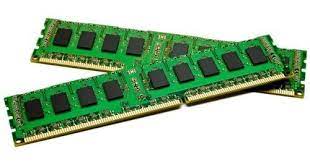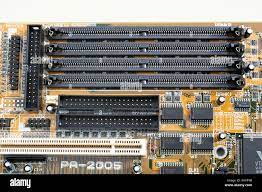What type of computer memory to use in a memory upgrade?
If you are going to update the memory in your computer system. Determining what type of computer memory to use while upgrading the memory is not an easy step. There are various tips given below, and the following information and advice will assist you in deciding which type of memory to purchase as a computer update.

Determining the type of memory required
If you are thinking about upgrading your computer memory, first of all, you need to figure out what kind of memory you have now and what types of memory your motherboard can support.
Use a third-party tool or service
An online service or a third-party software tool can be used that offers information on the components in your computer. These utilities provide a comprehensive report on all installed hardware, including memory, by scanning your computer system. For instance, the Crucial System Scanner scans your computer and displays information about your installed memory and accessible memory slots, which is a free program.
Documentation
The best way to figure out how much memory (RAM) to utilize with your computer when you are going to upgrade it is you can consult the documentation provided by the computer or motherboard manufacturer. In case you do not have your product documentation, you can search it on the website of the motherboard or computer manufacturers.
How do I find what computer motherboard I have
For case, the information something similar to the example below may be provided by your motherboard documentation.
The motherboard supports DDR4 SDRAM DIMM speeds of 2666, 2400, and 2133 MHz, according to the sample above.
Visually examine the memory
The computer can also be opened. You are required remove one of the memory sticks and physically inspect it for any identifying stickers or printed labels, do carefully and taking care not to create ESD (electrostatic discharge).

What to look for in memory
Here is a quick rundown of what to look for or figure out when you need to determine how much RAM your computer needs.
Memory type
What kind of memory is used by the computer? Some of the numerous memory types are SODIMM, RIMM, DDR-SDRAM, DDR2-SDRAM, DDR3-SDRAM, FPM, SDRAM, LIMM, SIMM, SODIMM, and RDRAM (RAMBUS). In modern times, DIMM/SDRAM memory is often used in computer systems.
Amount of pins
What is the maximum number of pins the computer accepts? 72, 30, 168, 184, or 240-pin connector? How many pins are accepted by the computer and are not fixed? The solution to this condition is dependent on the memory type.
Speed of memory
Memory speed can be measured in two different ways, which are as follows:
- Generally, the “speed” of memory refers to how many times it can read or modify data in a second. This speed has a significant impact on your CPU’s overall performance, which is measured in MHz.
- Latency is the time it takes memory to respond to information requests, access data stored in memory, and transport that data to the CPU. Nanoseconds are used to measure latency (ns).
Although latency is an essential statistic, as compared to compatible RAM modules, the differences in latency are relatively minor. The speed measured in MHz is often the most significant number to consider When making a decision about what memory to use in your computer.
Note: In your computer system, if you install memory sticks with different speed ratings, the speed of the faster module is not used and the slower speed will be used; as a result, you will be unable to receive the potential benefit of the faster module’s speed. Therefore, use RAM modules with the same speed if possible. Ideally, all of the RAM in your computer should be identical.
Error-checking
Servers and professional workstation personal computers employ ECC (error-correcting code) memory. In order to provide error protection, it compromises some of its performance. When data is modified in RAM (Random Access Memory), it checks immediately to ensure there were no problems.
Due to electromagnetic interference or device failures, there may be chances to occur errors naturally in RAM. As a result, bits in RAM (Random Access Memory) might be “flipped,” meaning that certain bits that should be set to 1 are put to 0 instead. For non-critical applications such as video games or web browsing, these mistakes are usually not deadly. For case, you might not notice or care if a single pixel in a video game’s backdrop has the incorrect value. On the other hand, ECC is a required feature for professional applications that demand a high level of precision, such as scientific calculations or financial transactions. ECC helps to reduce errors probability to nearly zero; however, it does not completely eliminate errors.
ECC is not supported by all motherboards, and those that do are generally more costly. As compared to non-ECC RAM of equivalent speed, ECC RAM modules are also more expensive. You probably don’t if you are not sure you really need ECC. Building a computer without ECC support typically means getting more bang for your buck when it comes to better computer performance.
Voltage
What are the voltage specifications? Make sure you are about the memory’s voltage requirements (e.g., 1.5v, 1.8v, or 2.5v).
Contact material
When you are going to purchasing a computer memory, the contact material on the memory is also significant. The contact area should match the memory slots’ material, which is either gold or tin-plated. Corrosion can occur when the memory and memory slot interface materials are not compatible.
Proprietary
Finally, is your computer’s RAM proprietary? Is there any RAM that your computer maker suggests if not? This should not be an issue if you have a more current PC (within the previous five years).
Before purchasing memory
Before upgrading the memory, check that the machine has enough memory slots for the memory you are installing; then, purchase the appropriate memory. For instance, if you are planning to use two 4 GB memory sticks in terms of installing 8 GB of memory to your computer, ensure that your computer system has two required slots. If you don’t have enough slots on your computer, you may have an alternative solution; you can remove old memory and replace it with new. Any memory that is removed, however, is deducted from your total. An example of a hypothetical circumstance is shown below.

A computer has no additional available slots, and 4 GB of memory, made up of four 1 GB RAM sticks. If you wanted to go up to 8 GB, you’d have to replace the four 1 GB sticks with four 2 GB sticks. Two 1 GB sticks might be replaced with two 4 GB sticks.
Tip
When it comes to memory, 1 GB equals 1,024 MB.
Installing the memory
Follow the instructions and precautions in our guide listed given below when you are ready to install the memory you bought.
How to install computer memory (RAM).
